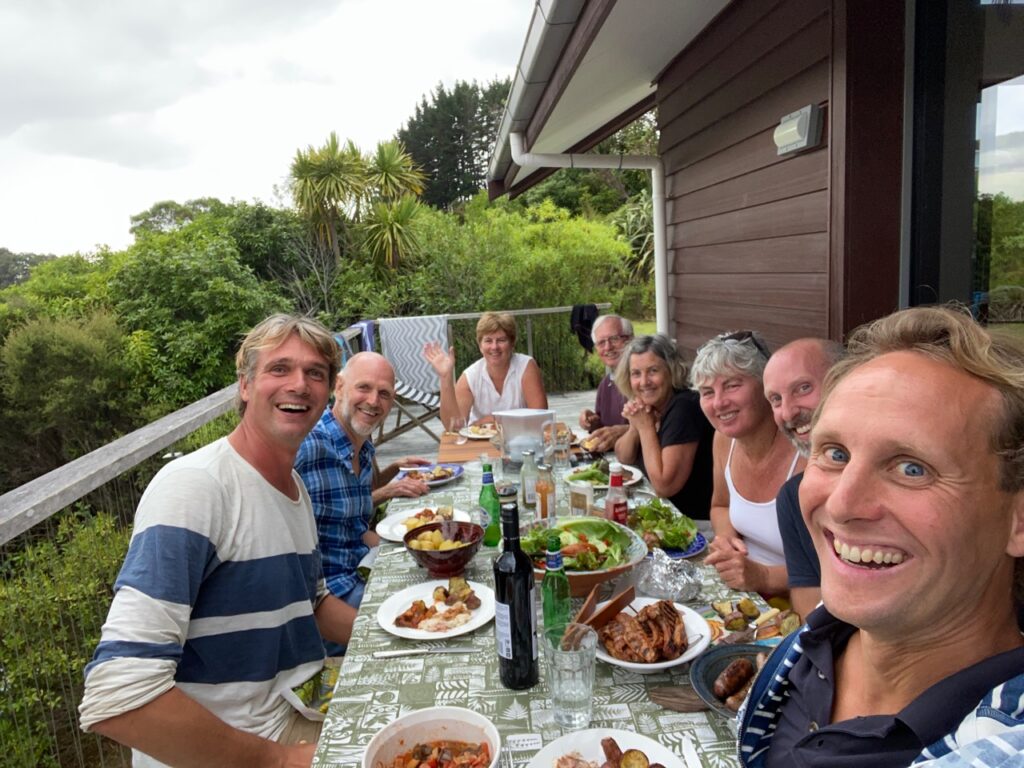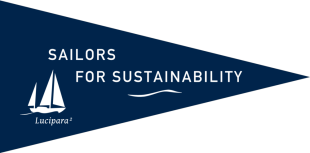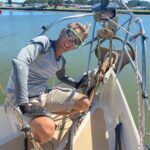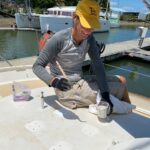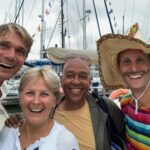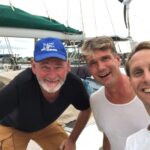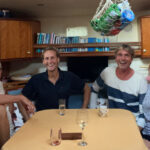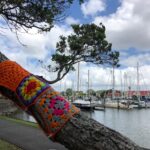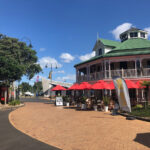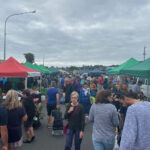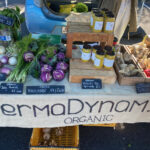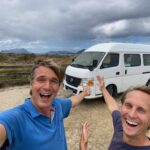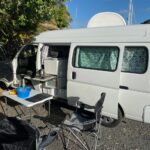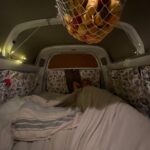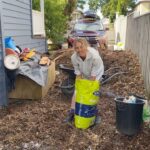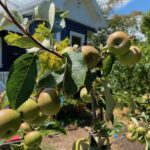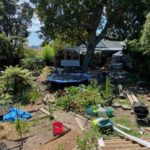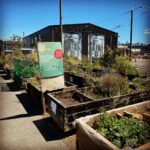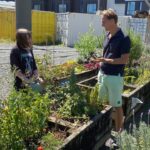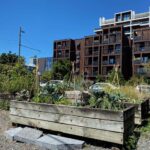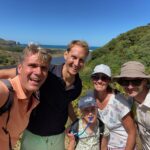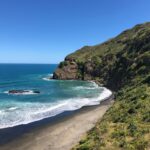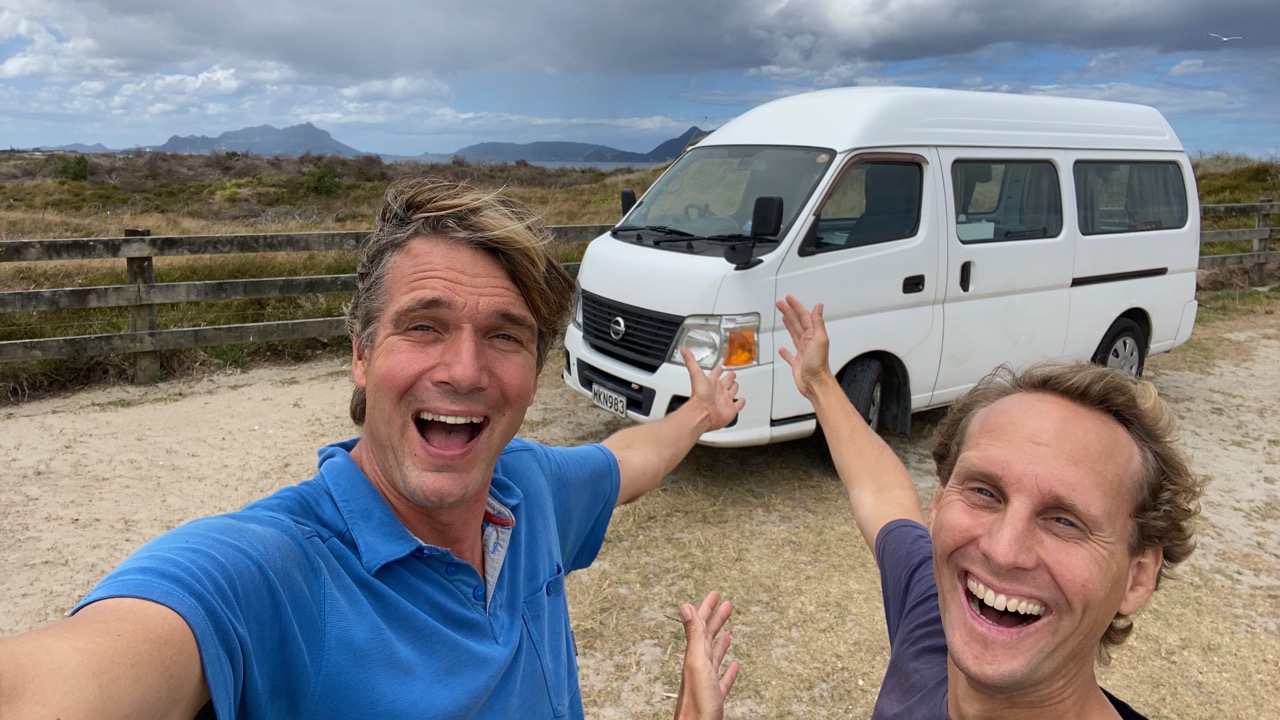
Our goals of doing boat maintenance, exploring sustainable solutions, and travelling in New Zealand seem incompatible, until we meet Miss Nissy.
Whangarei – Auckland (NZL)
“We can put on another layer of paint today”, Floris says drily while looking at the weather forecast on his phone. “It’s a going to be a sunny day.” Summer is in full swing, but rather than exploring our new home’s shores, we are doing boat maintenance. The weather forecast no longer dictates our sailing schedule. Instead, dry weather means eliminating rusty spots on the deck. But the paintwork is just one of the many items on our long maintenance list. Yet at the same time, we would like to document a new series of sustainable stories. And see something of the country. The question is if we can fit it all into six months, as that is how long our visas are valid. At first sight our goals for New Zealand – boat maintenance, documenting sustainable solutions, and cruising – seem incompatible.
First Things First
One thing is clear: while we work on Luci, we cannot take her out to sea to explore New Zealand’s shores. On the other hand, if we do all the boat maintenance first, we miss the summer months, which is the best time for touring the country. Ivar is the first to bring some structure in our thought process: “New Zealand allowed us to come to do essential boat maintenance, which Luci really needs” he argues. Indeed, sailing 29,000 miles across the oceans over the course of nearly five years have left visible marks on our classic steel lady. She brought us here through inhospitable corners of the planet. She defied ice, coral reefs, and storms. We are especially grateful to her for all those safe miles and want to get her back in top condition for the rest of our journey. “Let’s first remove the rust on deck and then reassess our options”, Ivar suggests and Floris agrees.
Removing rusty spots is a time-consuming job. We first mark the spots with numbers and end up with over 100. Steel never disappoints in that regard. One by one, we grind the spots down to the bare metal, then prepare it for painting, and finally put on five layers of primer and two finishing layers of paint. When the weather isn’t ideal for painting, we contact local tradesmen about the many other boat projects on our long list.
Setting Projects in Motion
One of those projects concerns the rigging. It has been on our boat for 15 years and over the course of the past two years we have had to replace five damaged shrouds. It’s high time to replace them all. Removing all shrouds at once will also give us the opportunity to take off the masts for inspection and minor repairs. We speak to fellow sailors to get recommendations for riggers, meet some of them to discuss the options and pricing, and contact a crane operator to discuss unstepping the masts.
Another project is the anchor chain. It is so corroded that it slips through the gipsy, making it nearly impossible to pull our anchor up with the windlass. Unfortunately, we cannot restore it to its former glory, but with its length of only 45 meters it was always on the short side. Deploying two anchors in tandem usually did the trick when the depth was more than 9 meters, unless the wind really blew. We learned the hard way that in those circumstances, it was not always safe to go on deck to extend the anchor chain with a line. That’s why we have decided to order a new chain of 100 meters. However, that means we will also need to expand the anchor chain locker in the forecastle. A boat builder at our marina inspects the forecastles and agrees to help.
High on the list of things to do is painting the hull. We might get away with doing touch ups of the blue hull above the water line, but we’ll definitely need to repaint the hull below it. That means Luci will have to be hauled-out. Furthermore, we will have to install a new autopilot drive, get a new life raft, repair our sails, and do engine maintenance. We realise that we cannot do it all at once, or by ourselves, so also depend on the availability of others. It’s quite a puzzle to get it all sorted.
Settling in in Whangarei
While our work on the boat continues, we settle into life at the marina and in Whangarei. We meet other sailors, like Martin and Ellen from SY Acapella, our very nice Dutch neighbours, and single-handed sailor Barry from England, aka the Old Seadog. His videos on YouTube are so popular, that he can be considered somewhat of a celebrity. We also reunite with Hans and Sonja from SY Ikinoo, whom we got to know at an event organised by Zeilen Magazine shortly before our departure in 2016. Like many other international sailors, they have been stranded in New Zealand for over a year now because of the pandemic. We get to know them and the others cruisers better at our marina’s Sunday barbecues. Everyone brings something different, which makes for an ever-changing but always delicious buffet. Ivar’s butter cake proves quite popular, too.
With so much food available, it’s essential we also do some exercise. Right on our doorstep is a circular run along the river, the Hatea Loop. The 4.5-kilometre track is popular with the locals and we soon get into a routine of running it every other day. Along the route we stop to work out using public fitness equipment, even if that causes a bit of muscle ache. But we need the break; we are quite out of shape after spending all that time at sea. Being able to do these runs is one of the advantages of staying in one place for a little longer.
We also discover Whangarei’s growers’ market on Saturday mornings, where local farmers offer their produce. We are immediate fans of the diverse offering and the friendly vendors. It’s amazing what grows in the region: apples, pears, bananas, berries, avocados, vegetables, even pineapple. It also feels good to buy directly from the people who work the land, so we gladly support them to make quality products that have environmental and social benefits. (Didn’t we dedicate a sustainable solution item on that topic? Indeed: The Social Benefits of Buying Local).
Kiwi Hospitality
We get a welcome break from doing boat maintenance when our friends Kerry and Daan invite us to spend the weekend at a “bach” (Kiwi speak for beach house, pronounced like “batch”) on the coast around Tutukaka. It’s a pleasure to spend time with them in such beautiful surroundings. When they take us to the beach, they convince us to swim in the ocean, which at 21 degrees Celsius feels warm to them but chilly to us after the tropical waters of French Polynesia. We also meet their friends, twins Claire and Stephanie, who take us to their nearby house. Their parents and another friend all join in for drinks and a barbecue. Everyone treats us like part of the group, which makes us feel so very welcome. When we later discuss with Kerry how heart-warming that was, he has a simple explanation: “That’s the Kiwi hospitality!” We can certainly get used to that.
